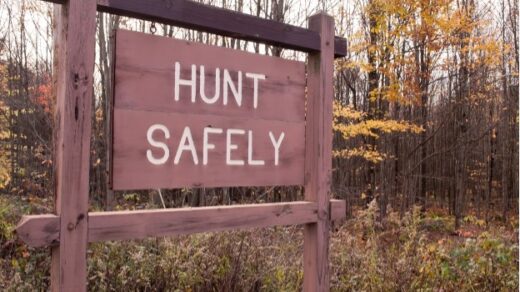
Hunting, a practice as ancient as humanity itself, has evolved significantly. Today, it stands at the intersection of tradition, conservation, and ethical debate. Ethical hunting practices are not just about preserving sport but ensuring the sustainability and conservation of wildlife populations for future generations. This detailed examination from Downtown Nixa Mark Anderson delves into the core principles of ethical hunting: fair chase, humane methods, and sustainable practices, emphasizing their importance in maintaining ecological balance and respecting wildlife.
The Ethos of Fair Chase
At the heart of ethical hunting lies the principle of fair chase. This principle dictates that the hunter should not have an overwhelming advantage over the prey, ensuring the animal has a fair opportunity to evade the hunter. It’s a concept steeped in respect for wildlife and the acknowledgment of the hunt as a test of skill, patience, and understanding of the natural world.
Implementing Fair Chase
Fair chase involves several practices and ethical considerations:
- Avoiding Unfair Advantages: Ethical hunters reject the use of technology that offers them an undue advantage over animals. This includes the use of drones for scouting, electronic calling devices, or high-powered lights that can disorient prey.
- Land and Animal Respect: Hunting on open, unenclosed lands where animals have a genuine chance to escape highlights respect for the animal’s abilities and the sporting nature of the pursuit.
- Skill Development: Ethical hunters continuously work on improving their tracking, stalking, and shooting skills to ensure that the hunt remains a fair challenge.
The ethos of fair chase serves to maintain the integrity of hunting as a practice that is both challenging and respectful of nature’s balance.
Humane Methods: The Compassion in the Kill
A fundamental aspect of ethical hunting is ensuring that animals are dispatched quickly and with as little suffering as possible. This humane approach is critical to respecting the life being taken and minimizing the impact on animal populations.
Achieving a Humane Kill
- Proper Equipment: Choosing the right weapon and ammunition is crucial. This means selecting tools that are appropriate for the game being hunted, ensuring a clean, lethal shot that minimizes suffering.
- Accuracy and Efficiency: Ethical hunters invest in their skills, practicing their aim and understanding animal anatomy to ensure they can achieve a quick, clean kill. This often involves learning the most effective shot placements for different species.
- Following Through: Ensuring the animal is quickly located and, if needed, dispatched with a follow-up shot is a responsibility ethical hunters take seriously. It’s about ensuring respect for the animal through a swift end.
Humane methods reflect a deep respect for wildlife, emphasizing the hunter’s responsibility to take life as painlessly and respectfully as possible.
Sustainable Hunting Practices: Conservation at the Core
Sustainable hunting practices are designed to ensure that hunting activities contribute positively to conservation efforts and do not harm wildlife populations or their habitats. These practices are informed by scientific research and are implemented through regulations and hunter education.
Key Aspects of Sustainable Hunting
- Adherence to Regulations: Ethical hunters follow laws, quotas, and hunting seasons established by wildlife management authorities. These regulations are based on scientific data and are designed to ensure the health and vitality of species populations.
- Species Selection: Focusing on species that are abundant or those whose populations require management for ecological reasons is a priority. Ethical hunters avoid endangered or threatened species, contributing to biodiversity and ecological balance.
- Selective Hunting: By selecting specific animals, usually older individuals or those no longer contributing to the gene pool, hunters can help maintain a healthy, genetically diverse population.
- Conservation Contributions: Many hunters are actively involved in conservation efforts, recognizing that their right to hunt is intertwined with the responsibility to preserve wildlife habitats and populations. This includes participating in habitat restoration projects, funding conservation research, and educating others about the importance of sustainable practices.
Sustainable hunting practices underscore the role of hunters as stewards of the environment, actively contributing to the preservation and enhancement of wildlife populations.
Conclusion: The Harmony of Ethical Hunting
Ethical hunting practices represent a confluence of tradition, respect, and modern conservation ethics. By adhering to the principles of fair chase, employing humane methods, and practicing sustainability, hunters can continue their ancestral traditions while ensuring the preservation of wildlife for future generations. Ethical hunting is more than a set of guidelines; it is a philosophy that places hunters as active participants in the natural world, responsible for maintaining their balance and vitality. Through education, regulation, and a commitment to these principles, the hunting community can continue to play a crucial role in conservation efforts worldwide, ensuring that the legacy of hunting is one of respect, stewardship, and sustainability.



